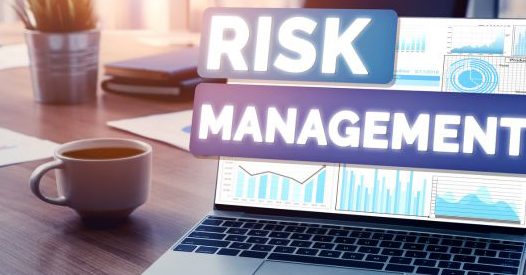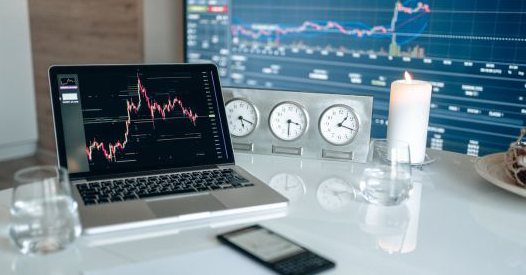
The foreign exchange (Forex) market offers immense opportunities for traders to make profits. However, it also carries a significant level of risk due to its high volatility, leverage, and unpredictable market conditions. Without proper risk management, even experienced traders can suffer significant losses. Managing risk effectively is crucial for long-term success in Forex trading. This article will provide an in-depth guide on how to manage risk in Forex trading to help you protect your capital and maximize your chances of success.
1. Understanding Risk in Forex Trading
Risk in Forex trading arises from price fluctuations, market volatility, leverage, and external economic factors. The key types of risk include:
- Market Risk – The risk of price movements going against your trade.
- Leverage Risk – The potential for amplified losses due to high leverage.
- Liquidity Risk – Difficulty in executing large orders without affecting the market price.
- Interest Rate Risk – The impact of changes in interest rates on currency prices.
- Political & Economic Risk – Events such as government policies, elections, and geopolitical tensions affecting Forex markets.
By identifying these risks, traders can implement strategies to minimize their impact.
2. Set a Risk-Reward Ratio
A proper risk-reward ratio helps traders maintain a balance between potential profit and acceptable loss. The most common risk-reward ratios include:
- 1:2 Ratio – Risking $1 to make $2.
- 1:3 Ratio – Risking $1 to make $3.
Using a risk-reward ratio ensures that even if only 50% of trades are successful, the overall portfolio remains profitable.
3. Use Stop-Loss and Take-Profit Orders
Stop-loss and take-profit orders are essential tools for controlling risk:
- Stop-Loss Order: Automatically closes a trade when a predefined loss level is reached.
- Take-Profit Order: Closes a trade when a predefined profit target is achieved.
Setting stop-loss and take-profit levels prevents emotional decision-making and protects traders from excessive losses.
4. Manage Leverage Wisely
Leverage allows traders to control larger positions with a small investment. However, excessive leverage can lead to significant losses.
- Beginners should start with low leverage (1:10 or 1:20) to minimize risks.
- Experienced traders may use higher leverage (1:50 or more) but should apply strict risk management.
- Always calculate potential losses before using leverage.
Using leverage responsibly ensures that a single loss doesn’t wipe out an entire account.
5. Diversify Your Trades
Diversification helps reduce risk by spreading investments across different currency pairs:
- Avoid putting all capital into a single trade.
- Trade different currency pairs to minimize exposure to one market.
- Consider a mix of major, minor, and exotic currency pairs.
By diversifying trades, traders can reduce the impact of losing positions.
6. Avoid Overtrading
Overtrading occurs when traders execute too many trades in a short period, often due to emotional reactions. It leads to:
- Increased transaction costs.
- Poor decision-making due to stress and fatigue.
- Higher exposure to market volatility.
To avoid overtrading, traders should:
- Stick to a trading plan.
- Limit the number of trades per day or week.
- Take breaks to prevent emotional trading.
7. Monitor Market News and Economic Events
Forex markets are highly sensitive to economic and political news. Key events that impact the market include:
- Interest rate decisions.
- Inflation reports.
- Employment data (e.g., Non-Farm Payroll in the U.S.).
- Geopolitical tensions and global crises.
Staying updated with market news helps traders anticipate price movements and avoid unnecessary risks.
8. Keep a Trading Journal
Maintaining a trading journal helps traders analyze their strategies and improve over time. A good trading journal should include:
- Entry and exit points.
- Reasons for taking the trade.
- Profit or loss incurred.
- Emotional state during the trade.
Reviewing past trades helps traders refine their approach and minimize future risks.
9. Use Risk Management Tools
Many brokers provide risk management tools to help traders control losses, including:
- Margin Call Alerts: Notifications when margin levels are low.
- Negative Balance Protection: Prevents the account balance from going negative.
- Trailing Stop-Loss: Adjusts the stop-loss level as the trade moves in favor.
Using these tools effectively can protect traders from unexpected losses.
10. Develop a Solid Trading Plan
A well-structured trading plan includes:
- Entry and exit strategies.
- Defined risk per trade (e.g., risking only 1-2% of capital per trade).
- Preferred trading strategies (trend-following, scalping, etc.).
- Market conditions that align with the strategy.
Following a trading plan reduces impulsive decisions and enhances risk control.
Conclusion
Effective risk management is the foundation of successful Forex trading. By implementing stop-loss orders, managing leverage wisely, diversifying trades, avoiding overtrading, and staying informed about market conditions, traders can protect their capital and increase their profitability. Remember, trading is not about eliminating risk but managing it smartly to ensure long-term success.
Before diving into live trading, practice these risk management techniques on a demo account and refine your strategies. Happy trading!
Frequently Asked Questions (FAQs)
1. What is the best risk-reward ratio for Forex trading?
A 1:2 or 1:3 risk-reward ratio is recommended for consistent profitability.
2. How much leverage should I use as a beginner?
Beginners should start with low leverage, ideally 1:10 or 1:20, to minimize losses.
3. What is the most important rule in Forex risk management?
The most important rule is never risk more than you can afford to lose and always use stop-loss orders.
4. How can I avoid emotional trading?
Stick to a trading plan, take breaks, and keep a trading journal to analyze your decisions.
5. Should I risk my entire capital on a single trade?
No, it is advisable to risk only 1-2% of your capital per trade to protect your account from large losses.

